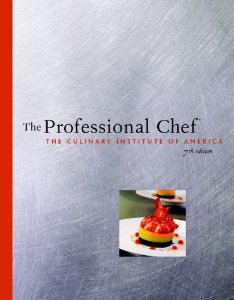
Hints that books as kitchen tools are on the way out
FOR many cooks, the pleasure of Thanksgiving is in the planning. In early November, the recipe folders come out, along with dreams of learning to perfect a lattice pie crust, and the cookbooks covered with splatters and sticky notes that evoke holidays past.
Fast-forward two weeks, to the sweaty hours when the sticky notes have curled up and blown away, the cookbooks are taking up all the counter space, and the illustrations for cooking a turkey in “Joy of Cooking” are revealed to be no more informative than they were in 1951.
If the people developing cooking apps for tablets have their way, that kind of scene will soon be a relic. And so will the whole notion of recipes that exist only as strings of words. Many early cooking apps were unsatisfying: slow, limited, less than intuitive and confined to tiny phone screens. Even avid cooks showed little interest in actually cooking from them.
But with the boom in tablet technology, recipes have begun to travel with their users from home to the office to the market and, most important, into the kitchen. With features like embedded links, built-in timers, infographics and voice prompts, the richness of some new apps — like Baking With Dorie, from the baking expert Dorie Greenspan; Jamie Oliver’s 20-Minute Meals; and Professional Chef, the vast app released last month by the Culinary Institute of America — hint that books as kitchen tools are on the way out.
“I never thought I would say this, but I don’t go anywhere without my iPad,” said Kristin Young, a collector of cookbooks in Santa Barbara, Calif., who said that even her favorite volumes are gathering dust. “If it’s not on my tablet, it’s just not useful anymore.”
The interface of a tablet offers possibilities to the cook that would be impossible with a laptop, let alone a book. Swiping, tapping and zooming through information presented in multimedia is a good match for the experience of cooking, which involves all the senses and the brain, as well. And when those faculties fail, as often happens in high-stress kitchen scenarios like Thanksgiving, apps can come to the rescue with features like technique videos, embedded glossaries and social media links.
Bob Huntley wrestled with the limitations of the written recipe before founding his Houston-based software company called CulinApp. In the 1990s, Mr. Huntley had little time for cooking; he was busy building the network for Doom, the first international online gaming network. But after he sold that business and retired to a ranch outside the small town of Mason, Tex., with his pet longhorns and a T1 data line that Verizon built just for him, he tried teaching himself to cook from cookbooks and online recipes. It didn’t work.
“I struggled with getting the whole recipe downloaded into my head,” he said.
“I would read the whole thing through, but pieces kept falling off — I needed a buffer,” he said, using a term for large caches of downloaded data that make a program run smoothly. “I kept having to go back to the page, and the interface was so difficult to manage.”
Mr. Huntley was becoming restless in retirement around the time Apple’s iPad was coming on the market. Accustomed to inventing alternate realities, he developed ways of presenting recipes on a screen. These strategies can be disorienting at first, but make enormous sense. CulinApp’s first product was Baking With Dorie ($7.99), the lively app from Ms. Greenspan, which was released this year.
Read more . . .
Bookmark this page for “cooking apps” and check back regularly as these articles update on a very frequent basis. The view is set to “news”. Try clicking on “video” and “2” for more articles.







